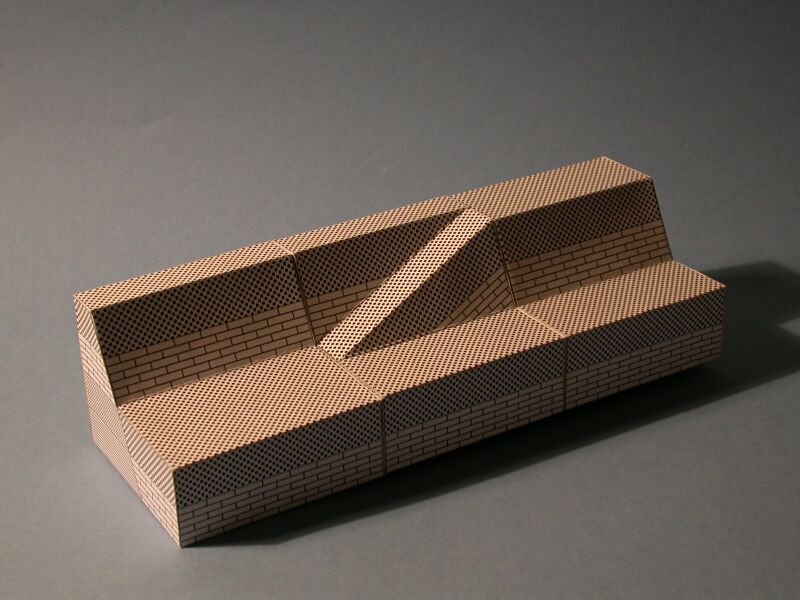Normal faults and relay ramps
This series of paper models of normal faults is designed to highlight the geometry of normal fault relays. Relay zones accommodate the transfer of displacement between fault segments by the formation of relay ramps. These models illustrate the conservation of displacement along the length of two normal fault segments.
The foto below shows a relay ramp in a limestone/shale multilayer sequence, Kilve foreshore, Somerset, UK: compass for scale (8 cm). Fault segments, dipping towards the foreground, offset a 13cm thick limestone bed. Displacement on the hangingwall fault segment decreases towards the left from 15 cm to zero, whereas the displacement of the footwall fault segment increases towards the left (displacement on the footwall fault segment increases to 15cm, though the photograph shows some shale preserved on the downthrown side of the segment).

The models fit together to provide two different normal fault segment arrays (i.e. left-stepping and right-stepping) and intervening relay ramps (see photo of right-stepping array). Possible exercises on this fault array could include: (1) Construct a fault polygon map of the upper horizon. (2) Draw cross-sections across the models and consider issues relating to fault linkage (e.g. how many cross-sections are required to discriminate between hard- and soft-linkage map-view interpretations of this fault array!). (3) Construct a fault displacement vs distance curve along the length of the fault array. (4) Consider how this fault array evolved.

|
BACK
| 
